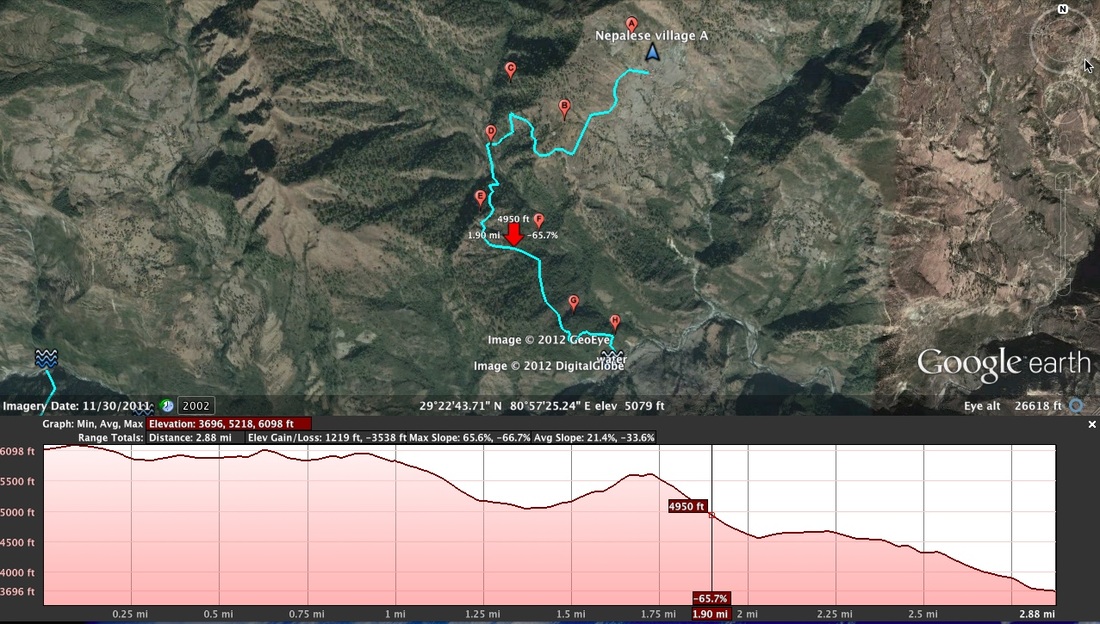|
Teacher Downloads
|
Water Problems
Objectives
Lesson Description This activity utilizes a relatively new option in Google Earth while examining a real world dilemma. More than a billion people on the planet are faced with an inadequate supply of water. For many, this means they must travel miles every day to reach their water source. This task of hauling water typically falls upon women and children. For this lesson, the students are given several paths to water and asked to analyze the changes in elevation. This is accomplished using the elevation profile. This new feature allows one to examine the elevation of a path on the Earth’s surface in a pop-up graphic. The elevation profile can be selected in the path’s menu. It includes a line graph depicting the changes of elevation, and data regarding the elevations, distance, and slope. As one moves the cursor across the graph, a red arrow appears in Google Earth’s main window indicating the corresponding location. In this way, the elevation of a path can be inspected for a specific location or across the entire span of the path. Two countries are highlighted in the lesson: Burkina Faso and Nepal. For each location, students are presented with a path from a village to a water source. The students inspect the location and then collect data of the path using the elevation profile graph. The problems then develop into that of an analytic nature. Would you rather haul water over a long distance or across a steep terrain? What would the best path to water be? I’ve placed this activity with the Project-Based Learning group of lessons for several reasons. First, I think it would work best to have pairs of students working on these questions. There isn’t always one true answer, so the sharing of different viewpoints should be encouraged. Second, I sincerely hope that teachers use this lesson as part of a large theme unit, such as conservation of natural resources or multicultural education. I’ve included some links below to related material, including a comprehensive unit on Nepal’s culture and water situation by Educate the Children and Cornell University. Work with your fellow teachers and design a unit that best suits your students. Finally, although the lesson itself can be accomplished in one sitting, it might best be split into three stages so that the class can discuss key elements. I’ve included some points of discussion with the Teacher’s Water Problems worksheet. Suggested Links: |


